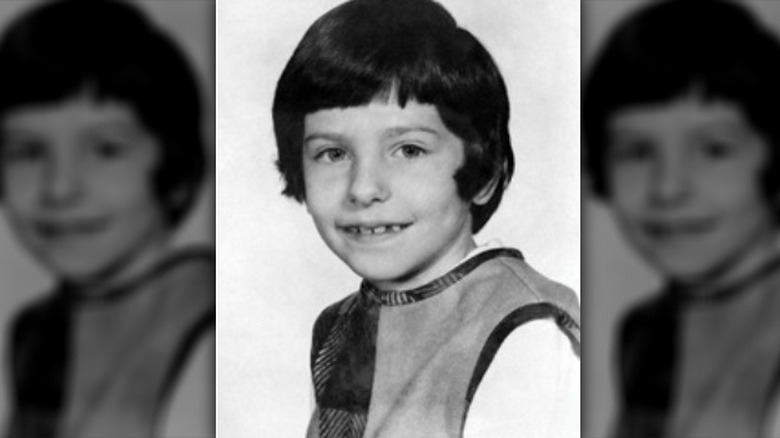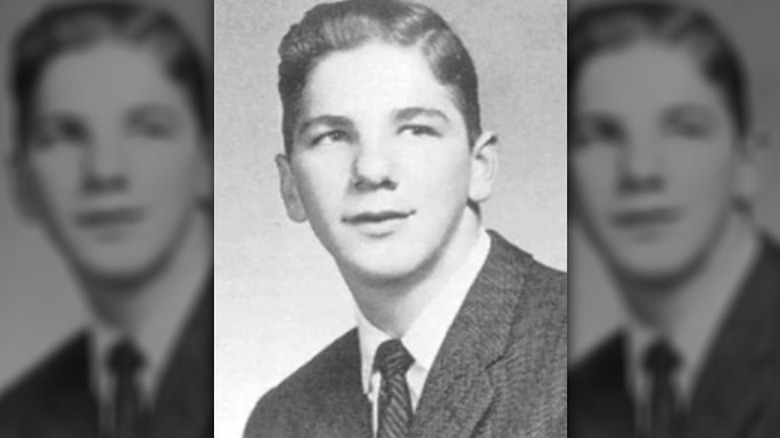How The Murder Of Marise Chiverella Was Finally Solved
On the morning of March 18, 1964, 9-year-old Marise Ann Chiverella left her Hazleton, Pennsylvania home, and was walking down West Fourth Street toward Joseph's Parochial School where she was a student. As reported by PA Homepage, Chiverella was carrying canned goods, which she planned to donate to the school for a food drive.
As it was an exceptionally cold morning, and she appeared to be uncomfortable, several neighbors asked Chiverella if she wanted to come inside to get warm. However, she declined their invitations, as she wanted to get to school to drop off the canned goods and attend morning mass.
One of the neighbors who saw Chiverella that morning was her mother's cousin Helen Slattery. In an interview with the Standard-Speaker, Slatterly said her house was approximately two blocks from the Joseph's Parochial School. Although she considered asking Chiverella to come inside when she saw her, she could tell the girl was in a hurry. Slatterly said she regretted her decision, as authorities believe she was probably the last person to see Chiverella alive.
Oregon Live reports friends and family described Chiverella as a shy, but friendly, girl, who enjoyed playing the organ. She also dreamed of becoming a nun. They were all stunned when the 9-year-old girl seemingly vanished without a trace fewer than two blocks from her school.
Marise Chiverella was found dead the same day she went missing
Later that same day, a man and his nephew were driving past a dumping site for a defunct coal mine when they spotted something that they thought resembled a large doll. As reported by The Washington Post, they contacted authorities when they realized it was actually the body of a little girl.
When authorities arrived on the scene, they were horrified to discover the victim was Marise Chiverella. According to The Washington Post, law enforcement officials determined the child was bound with her shoelaces, gagged with her own scarf, and ultimately strangled to death before her body was dumped at the waste site. They also confirmed she has been sexually assaulted.
Standard-Speaker reports law enforcement officials initially believed Chiverella's murder may have been linked to the sexual assault and murder of another young girl a year and a half earlier. On October 22, 1962, 9-year-old Carol Ann Dougherty was walking to the library in Bristol, Pennsylvania. Along the way, she stopped at St. Mark's Roman Catholic Church. Although it is unclear why she stopped at the church, authorities believe she went there to pray.
Later that same day, her father discovered her body on the landing of the church's choir loft. She had been strangled to death with a belt, and an article of clothing had been stuffed into her mouth. Law enforcement officials later confirmed Dougherty had been sexually assaulted.
Marise Chiverella's case remained unsolved for 58 years
Although there are more than 100 miles between Hazleton and Bristol, Pennsylvania, and the murders occurred nearly 19 months apart, authorities noted enough similarities between the cases to suggest they were committed by the same person. As reported by Standard-Speaker, detectives found brown pubic hairs on both girls, which were sent to an FBI lab for testing. However, the results were inconclusive.
Authorities noted an estimated 1,000 people from Bristol were visiting Hazleton for a high school basketball playoff game on the night before Marise Chiverella was killed. However, they were unable to confirm any of the spectators were suspects.
PA Homepage reports a young man, who was observed in the woods near the dumping site where Chiverella's body was found, may have witnessed her murder or the dumping of her body. However, authorities said the man "had some psychological challenges," which made it difficult to determine whether he actually witnessed the incident.
Law enforcement officials received numerous tips in the decades following Chiverella's murder. Unfortunately, none of the tips led to a viable suspect or helped further the investigation. The case eventually went cold, and authorities did not discover any helpful information about the case until 2007.
According to People, detectives collected and preserved samples of bodily fluid found on Chiverella's coat. However, it would be decades before advancements in DNA technology would assist authorities in their investigation.
Marise Chiverella's murder was solved using DNA
In 2007, forensic analysts were finally able to build a DNA profile using the samples collected from Chiverella's coat. Authorities submitted the profile to several DNA databases each month, to compare with any new or existing profiles. Unfortunately, they did not get a break in the case until 12 years later. As reported by People, the DNA profile was uploaded to GED Match, which is a genealogical database, in 2019. Although authorities were unable to find a direct match, they did find a match with a distant relative, who happened to be related to Marise Chiverella.
Oregon Live reports a teenage college student studying genetic genealogy, who was named Eric Schubert, volunteered to work on building an extensive family tree to help authorities identify a potential suspect. According to People, the family members they were able to identify were cooperative with the investigation and agreed to provide DNA samples to help narrow the list to one suspect.
As reported by The New York Times, the suspect, who was named James Paul Forte, happened to be Chiverella's sixth cousin. At the time of the murder, Forte was 22 years old and lived approximately six blocks from Chiverella's home. Although they were technically related, authorities said they could not find any connection between Forte and his victim. Amid their investigation into Forte, authorities learned he died of a suspected heart attack in 1980.
Marise Chiverella's killer was identified as James Forte
On February 3, 2022, authorities announced James Forte's DNA matched the samples taken from Marise Chiverella's coat. They had also learned Forte had a criminal history. As reported by The New York Times, he was convicted of aggravated assault in 1974 and sentenced to one-year probation. Four years later, he was arrested and charged with reckless endangerment and harassment.
At the time of his death, Forte still lived in Hazleton and was unmarried. To confirm he was indeed Chiverella's killer, Forte's body was exhumed to collect his DNA. On February 2, 2022, authorities announced James Forte's DNA matched the sample found on his victim's coat.
Following the announcement that Chiverella's murder was solved, and Forte was identified as her killer, another Hazelton woman realized she narrowly escaped the clutches of a killer. As reported by WNEP, Gina Donahue-Connors was stunned to see Forte's photo on the news and realized he was the same man who attempted to lure her into his car when she was 9 or 10 years old.
In an interview with WNEP, Donahue-Connors said she was walking down the street in Hazleton when Forte approached her in a white car. He stopped, rolled down the window, and offered to give her a ride. Although she told him no, Donahue-Connors said Forte was persistent and did not leave until she ran away from the car and into a grocery store.
Marise Chiverella's parents died before her murder was solved
During the interview with WNEP, Donahue-Connors said she was still uncomfortable thinking about her encounter with the killer. However, knowing who it was did bring her a degree of closure.
Marise Chiverella's parents died before her abduction and murder were solved. However, her surviving siblings said they were happy to have some closure. In an interview with Oregon Live, Marise's sister, Carmen Marie Radtke, said her parents never sought revenge for Marise's death, they simply wanted to see justice served.
Radtke said she and her siblings "have so many precious memories of Marise." However, they have all grieved the loss. Radtke said, "our family will always feel the emptiness and sorrow of her absence ... We will continue to ask ourselves, what would have been, what could have been?"
Chiverella's family said that although James Paul Forte is dead, and will never be punished for the crime, they are grateful for the Pennsylvania State Police's persistence, and believe "justice has been served." The identification of Chiverella's killer also brought closure for the community, which was deeply affected by the brutal crime.





